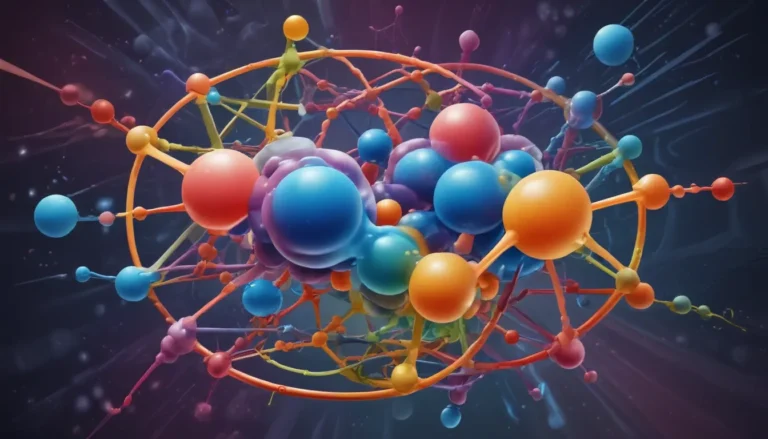A Note About Images: The images used in our articles are for illustration purposes only and may not exactly match the content. They are meant to engage readers, but the text should be relied upon for accurate information.
Gravimetric analysis, a cornerstone of the field of chemistry, has long been revered for its precision and accuracy in determining the quantity of substances in a sample based on their mass. Beyond its practical applications, this analytical method harbors a world of intrigue and fascination. Let’s embark on a journey to uncover 16 enigmatic facts about gravimetric analysis, shedding light on its historical significance, unique characteristics, and the breakthroughs it has facilitated in the realm of chemistry.
Delving into the World of Gravimetric Analysis
Gravimetric analysis stands as a quantitative method, offering a highly precise and accurate means of measuring substance concentrations in samples through the calculation of precipitate masses. Rooted in the principle of mass balance, this technique traces its origins back to the late 18th century, where it has withstood the test of time as a reliable analytical approach.
The Intricacies of Gravimetric Analysis
- Meticulous Sample Preparation: This method demands meticulous sample preparation, including precise dissolution and precipitation steps to ensure accurate results. Impurities in samples must be carefully accounted for to avoid any interference.
- Application in Environmental Analysis: Gravimetric analysis finds extensive use in environmental monitoring, allowing for the identification of pollutant concentrations in water and air samples.
- Time-Consuming Nature: The meticulous nature of gravimetric analysis makes it a time-consuming process, necessitating precise measurements, multiple rinsing steps, and controlled drying for accuracy.
- High Precision: Renowned for its high precision, gravimetric analysis yields results with minimal experimental errors, making it invaluable in industries where precision is paramount.
- Calibration Importance: Calibration plays a crucial role in maintaining the accuracy of gravimetric analysis. Standard solutions or certified reference materials are utilized to establish a relationship between mass and analyte concentration.
- Utilization in Pharmaceutical Analysis: Gravimetric analysis is widely employed in pharmaceutical analysis for determining active ingredients, impurities, and contaminants in formulations.
The Versatility and Significance of Gravimetric Analysis
- Stoichiometric Foundation: This analytical technique hinges on stoichiometry, leveraging balanced chemical equations to ascertain analyte quantities in samples.
- Skillful Personnel Requirement: Due to its meticulous nature, gravimetric analysis calls for skilled laboratory personnel adept at handling and analyzing samples proficiently.
- Usage for Organic and Inorganic Substances: Gravimetric analysis boasts versatility, catering to the analysis of both organic and inorganic substances across various industries.
- Detection of Trace Amounts: Its sensitivity allows gravimetric analysis to detect and quantify trace amounts of substances, making it pivotal in forensic and environmental analyses.
Unveiling the Mysteries Behind Gravimetric Analysis
Gravimetric analysis, a gravimetric method of analysis, roots itself in fundamental chemical principles such as stoichiometry, mass balance, and precision measurement techniques. Its ability to determine compositions and purities through mass measurements offers a valuable tool for chemical research and analysis, unlocking vital information about the substances under scrutiny.
A Glimpse into the Future
As technology progresses, gravimetric analysis is poised to evolve and continue its pivotal role in scientific advancements. Its ability to provide precise measurements and profound insights signifies its enduring relevance in the world of chemistry. With each exploration through gravimetric analysis, more enigmatic facts about this analytical world are certain to unfold, further enriching our understanding of the chemical realm.
FAQs: Answering Your Queries
- What is gravimetric analysis?
-
Gravimetric analysis is a method in chemistry used to determine the composition and purity of a sample by measuring its mass.
-
How does gravimetric analysis work?
-
In gravimetric analysis, a known substance is added to an analyte-containing solution. By measuring the mass of the resulting precipitate, the analyte concentration can be determined.
-
What are some applications of gravimetric analysis?
-
Gravimetric analysis finds applications in pharmaceuticals, environmental monitoring, and forensic science, aiding in drug purity evaluation, air quality measurement, and forensic evidence analysis.
-
What are the advantages of gravimetric analysis?
-
Gravimetric analysis offers high precision, accuracy, and simplicity in determining analyte concentrations, making it widely applicable in diverse laboratory settings.
-
Are there any limitations to gravimetric analysis?
-
Gravimetric analysis requires careful sample handling to minimize errors, along with potentially being time-consuming due to the necessary precipitation and drying steps.
-
Can gravimetric analysis be used for both organic and inorganic substances?
- Yes, gravimetric analysis can be applied to both organic and inorganic substances, although it is commonly used for inorganic substances owing to the presence of stable, measurable precipitates.
Unlock the Wonders of Analytical Chemistry
Delving into the mysteries of gravimetric analysis unveils not only precise measurements but also a realm of captivating knowledge. And as we continue to explore the realms of analytical chemistry and stoichiometry, the intricate dance of elements and compounds that shapes our world becomes clearer. Join us in decoding the enigmatic world of chemistry and unlocking the secrets it holds, one fact at a time.






